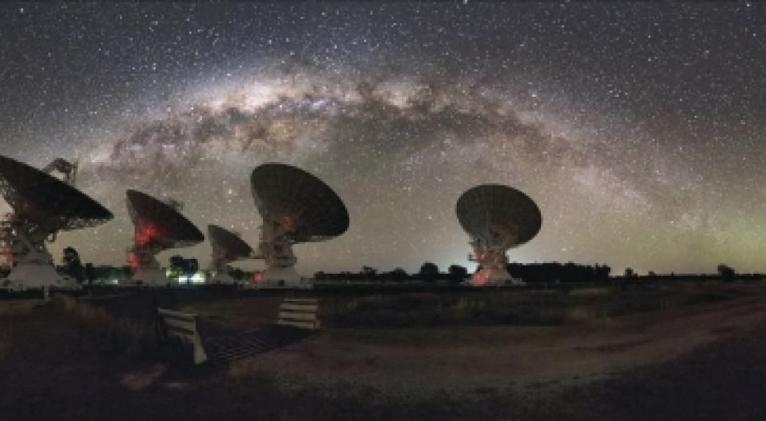Mysterious Blobs in Milky Way Linked to Galaxy's Missing Matter
especiales

"These observations provide us with a new understanding of the galaxy's interstellar gas which is important for recycling stellar material for new star formation," Bannister said in a CSIRO statement.
The mysterious blobs, which could be shaped like noodles, lasagne sheets or possibly hazelnuts, were first identified 30 years ago as a result of the detection of radio waves from a bright quasar in a distant galaxy, varying widely in strength.
At that time the scientists, unable to figure out what they were, had attributed it to the galaxy's invisible 'atmosphere', a gas of electrically charged particles that lies between the stars in the galaxy.
"These lumps of gas work like lenses, focusing and defocusing the radio waves from more distant objects, making them appear to strengthen and weaken over a period of days, weeks or months," Bannister said.
Pointing the telescope at a quasar called PKS 1939-315 in the constellation of Sagittarius, the research team observed a lensing event for a year.
Astronomers think the lenses are about the size of the Earth's orbit around the Sun and lie around 3,000 light-years away; 1000 times farther than the nearest star, Proxima Centauri, CSIRO said.
Although till now nothing was known about their shape, the team now says this lens could not be a solid lump or shaped like a bent sheet.
"We could be looking at a flat sheet, edge on" or "looking down the barrel of a hollow cylinder like a noodle, or at a spherical shell like a hazelnut," CSIRO team member Cormac Reynolds said.
The lensing event was observed by the CSIRO team using radio and optical telescopes, however, the optical light from the quasar didn't vary during the observation, indicating the phenomenon was invisible to the tools used.
Bannister added these lenses could explain what astronomers call the missing mass problem.
"Current models of nucleosynthesis in the first few minutes after the Big Bang 13.8 billion years ago predict that far more hydrogen, helium and lithium was produced than what we can actually find," Bannister told news channel ABC.
"The leading candidate is the hot plasma contained in the filaments and knots of the web-like, large-scale structure of the universe. Our lenses provide another candidate," he added.













Add new comment